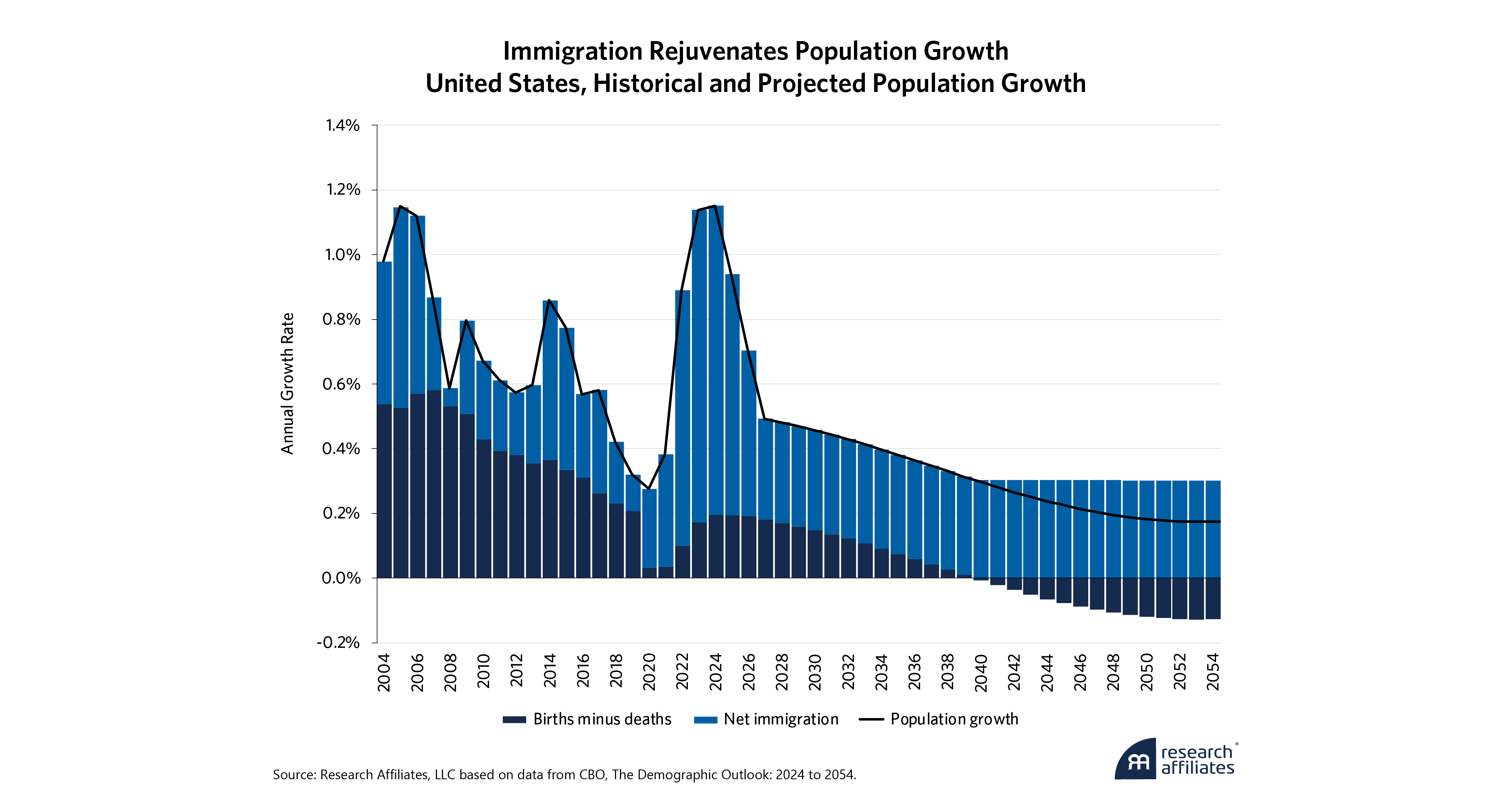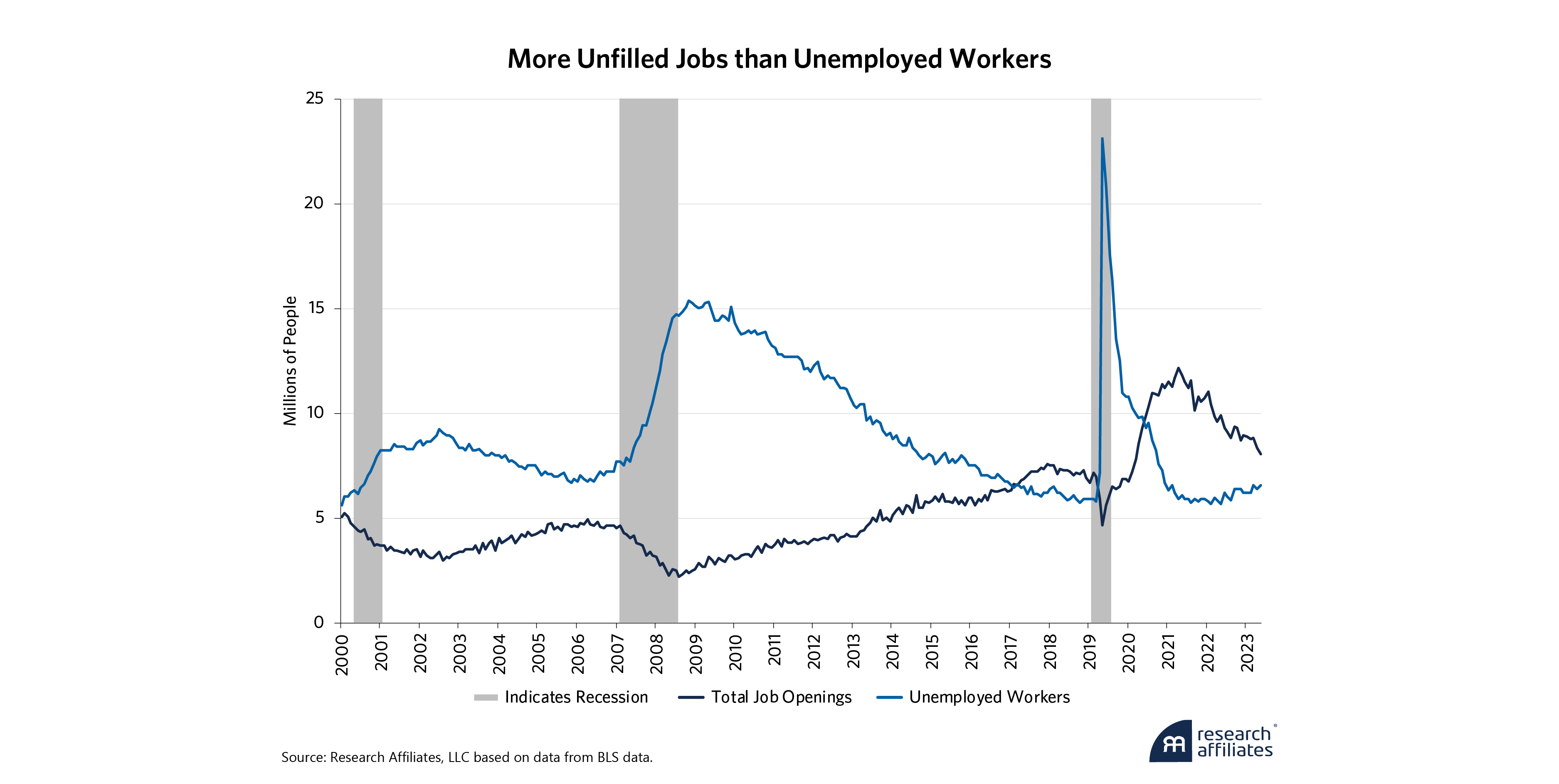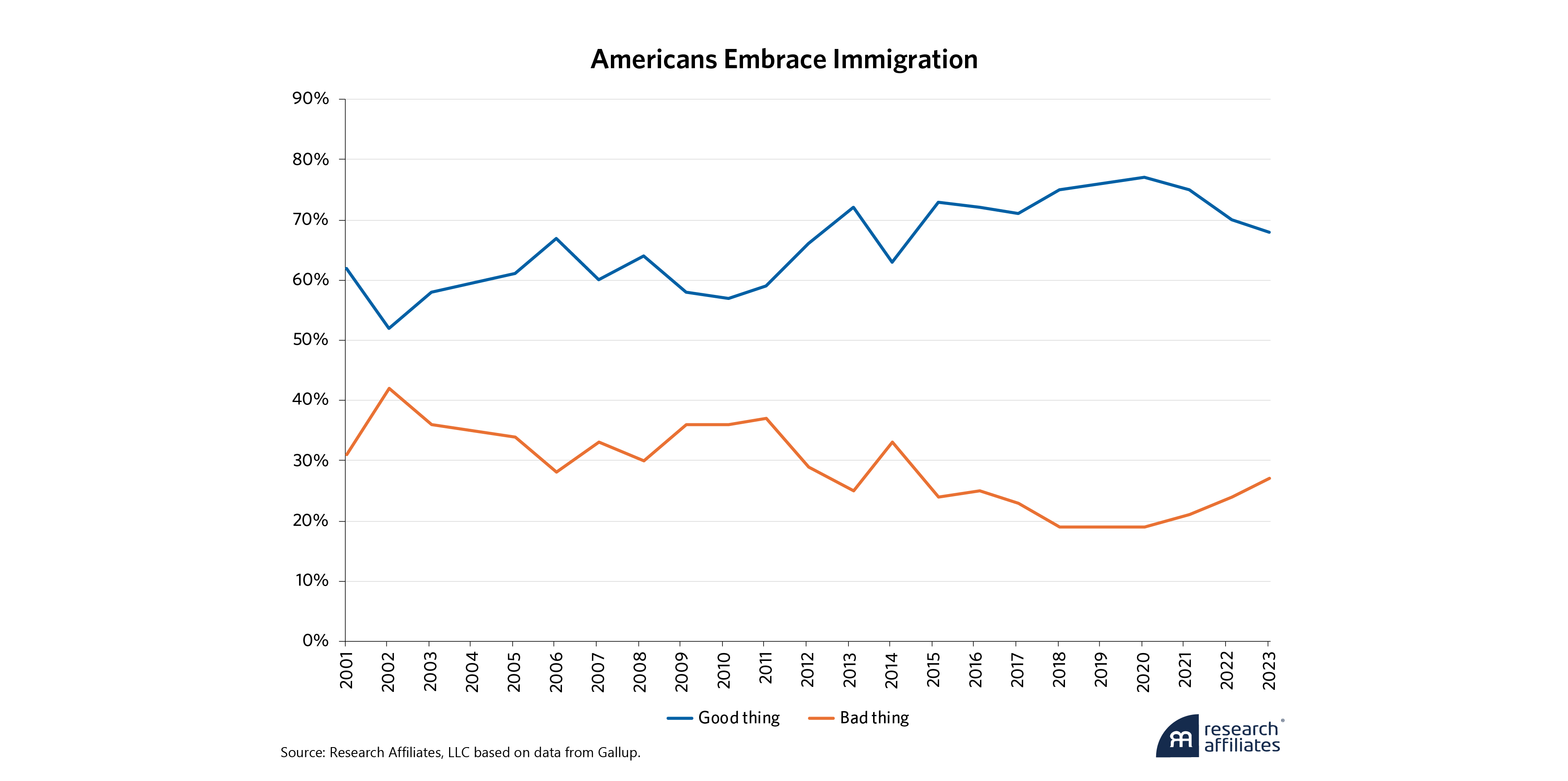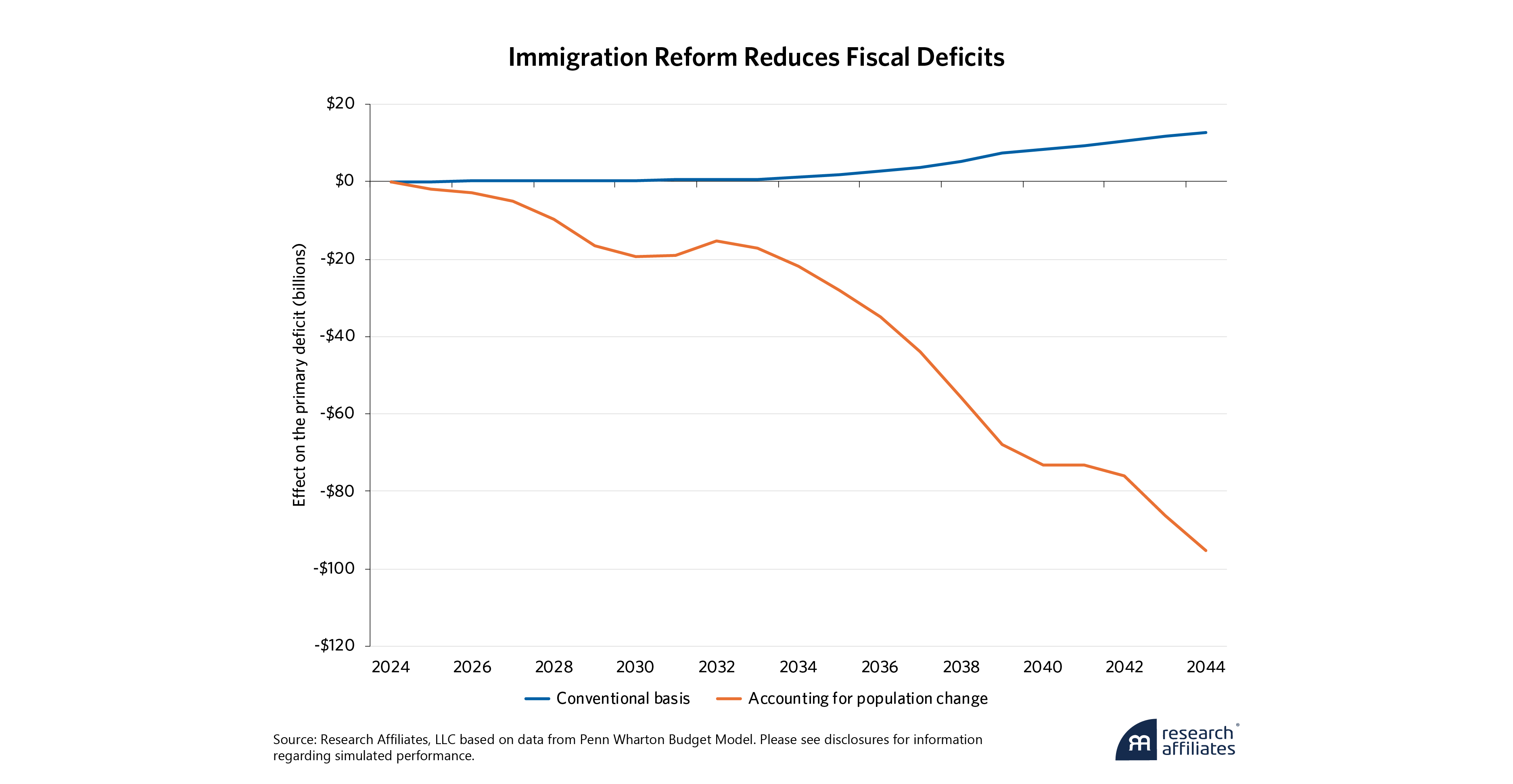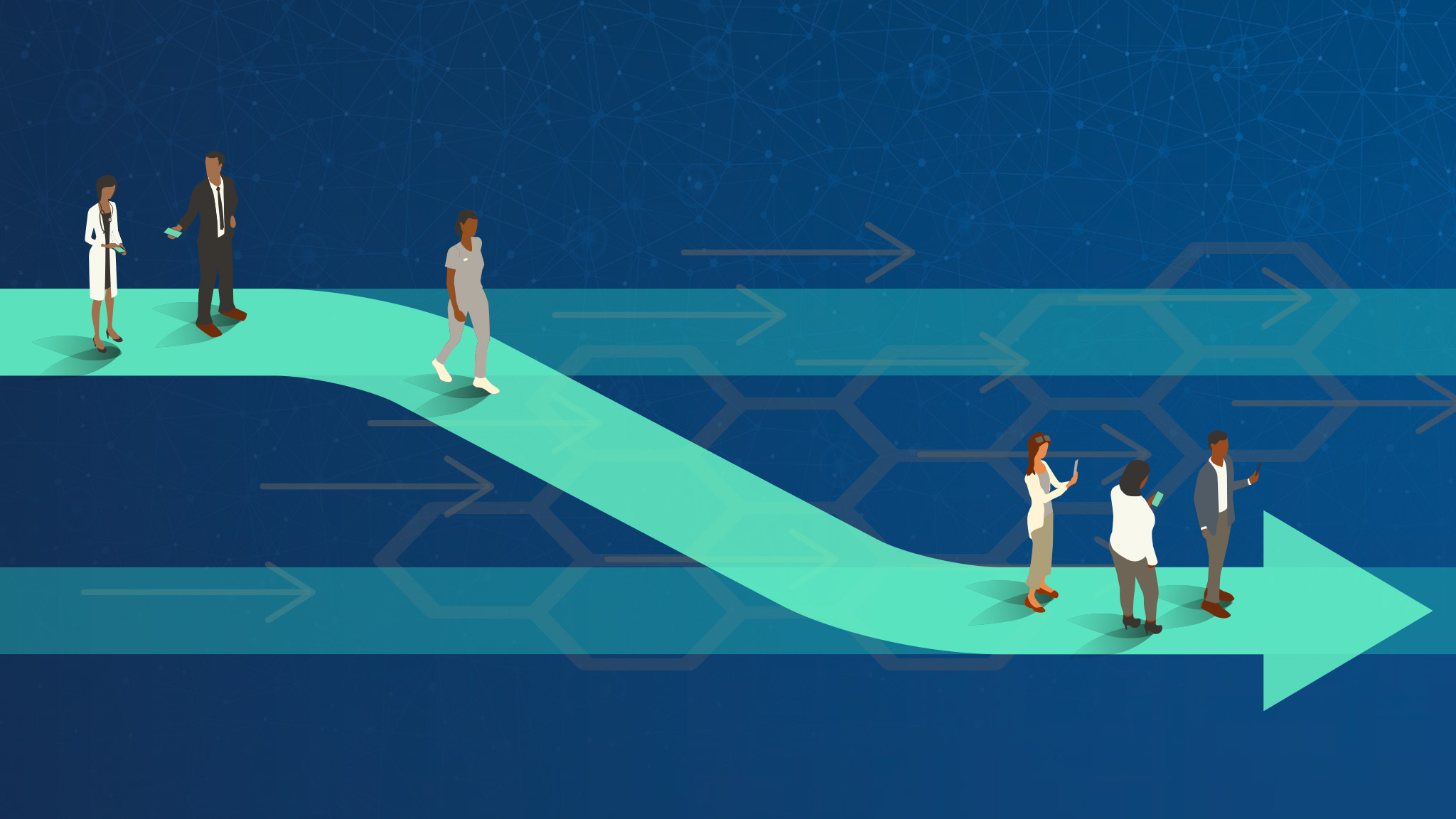
Change Required: Immigration Reform is an Economic Necessity
We cannot allow violence by a tiny minority, and the related anger of a larger minority, to hijack immigration reform, which is a crucial long-term economic imperative.
Depopulation is a serious fiscal malady afflicting all developed countries. Immigrants provide the antidote, injecting new life and vitality into aging populations.
Immigrants spur creativity, innovation, and prosperity.
Immigration of skilled workers in short supply boosts growth of the labor force and enhances productivity, thereby helping to meet our fiscal challenge.
During a recent August weekend in the artsy Southern California mountain town of Idyllwild, my wife Donna and I enjoyed an outdoor performance by one of our favorite local bands, Change Required. Seated near us was a gentleman wearing a graphic T-shirt proclaiming, “We the People ARE PISSED OFF.” The message on this shirt caught my attention.
Create your free account or log in to keep reading.
Register or Log in
Introduction
News of that day included rioting in northern England, apparently in response to misinformation spread online claiming the person who stabbed to death three children and injured eight others in Southport was a Muslim immigrant. Despite clarifications by authorities that the attacker was a 17-year-old British citizen born in Cardiff to parents from Rwanda, the violence continued. Obviously, some of our fellow citizens on both sides on the Atlantic are pissed off.
Many other commentators are better qualified than I to explain why some are so passionately opposed to immigration, especially by those with different religions, cultures, and races. My message is that such an infusion of new people into our workforce is not just desirable. It’s economically necessary. Change Required.
Immigrants Rejuvenate Our Population
Fertility rates in almost all developed countries have dropped below the replacement rate of an average of 2.1 children per woman. Japan, China, Singapore, Taiwan, and South Korea have fertility rates near or below 1. Fertility rates In Europe range from 1.1 to 1.8. The US fertility rate has dropped to 1.6, and as a result, our natural domestic population growth is slowing toward zero.
No developed country has yet devised a policy to reverse declining fertility. Providing generous benefits has failed. Look at Europe, where paid parental leave, subsidized childcare, and government-provided early childhood education are all much more common and generous than in the US. Nonetheless, average European fertility rates are below the US. Likewise, paying women to have more babies hasn't succeeded. Look at Japan, South Korea, and Taiwan, who provide the world’s most generous financial incentives for having babies. They have the lowest fertility rates in the world.
Fortunately, we in the US benefit from strong immigration, providing an antidote to depopulation by injecting new vitality into our aging workforce.
”Low and declining fertility rates have slowed domestic population growth toward zero or below across the developed world. Depopulation is already occurring in many countries, including Japan, South Korea, Taiwan, China, Italy, Spain, Portugal, Hungary, Romania, Croatia, Serbia, and Russia, among others.
Depopulation across the developed world poses a formidable fiscal challenge. When population growth turns negative, the labor force soon follows. Support ratios rise. With too few workers supporting more retirees, public retirement and health benefits become unaffordable. Fortunately, we in the US benefit from strong immigration, providing an antidote to depopulation by injecting new life and vitality into our aging workforce.
Immigration Propels Productivity through Innovation
Immigrants possess diverse educational backgrounds and experiences, leading to a cross-pollination of ideas, thereby fueling innovation, dynamism, and productivity growth. They are the unsung heroes of American science, pushing the boundaries of knowledge and discovery, winning 40% of Nobel Prizes awarded to Americans in the 21st century and filing a disproportionately high number of our patents.
Many immigrants work tirelessly to achieve their goals, often as risk-taking entrepreneurs, as vividly shown by a thorough study of the economic impact of immigration: “Immigrants have started more than half (44 of 87) of America's startup companies valued at $1 billion dollars or more and are key members of management or product development teams in over 70 percent (62 of 87) of these companies."
Immigrants possess diverse educational backgrounds and experiences, leading to a cross-pollination of ideas, thereby fueling innovation, dynamism, and productivity growth.
”Immigrants and their second-generation offspring are the lifeblood of our most innovative public companies, founding nearly half of today's Fortune 500, including Apple, founded by the son of a Syrian immigrant; Alphabet (Google), cofounded by a Russian immigrant; Amazon, founded by the son of a Cuban immigrant; Tesla and SpaceX, founded by a South African immigrant; and Nvidia, founded by a Taiwanese immigrant.
Prioritize Workers with Job Skills in Short Supply
We may improve the ample economic benefits of immigration by prioritizing legal immigration of young workers whose skills are in short supply here. Since 2010, retirements of baby boomers have caused a steady uptrend in unfilled job openings. By 2017, we had more unfilled jobs than unemployed people. After the disruption of the pandemic, we now are back to more unfilled job openings than unemployed workers.
We should begin pro-growth immigration reform by providing permanent residency to many more graduates from our colleges and universities, favoring computer scientists, engineers, doctors, accountants, educators, and others with professional qualifications, along with their spouses. More broadly, we should favor nurses, healthcare aides, and skilled tradespeople, all of whom are presently in short supply in today’s economy and will become even scarcer as our native-born population ages and retires.
Immigrants and their second-generation offspring are the lifeblood of our most innovative public companies, founding nearly half of today's Fortune 500.
”We can fast-track arrival of the workers needed to address our long-term labor crisis following the models of Canada and Australia. Both countries use points-based systems to assess and rank potential immigrants based on skills, education, and work experience. By welcoming skilled immigrants, we can fill the holes created by our labor shortage, thereby boosting both labor force growth and productivity.
Finding Common Ground
Immigration challenges us to balance competing objectives of border security, economic growth, and national identity and cultural cohesion. Necessary reform requires compromise. Today’s reform stalemate is driven by demands from the political extremes, who cynically prefer to keep this critical issue unresolved precisely because it is polarizing.
Neither extreme is practical. We won’t “open our borders” without sensible rules. No developed country can embrace fully open borders – allowing unrestricted immigration from anywhere in the world with no effort to assess who is arriving, how many, and why. Even the European Union, which allows free movement of people among its member states, imposes strict limitations on immigration from non-EU countries.
Reforms that increase legal immigration of workers whose skills are in short supply will boost economic growth, which is the best solution to our fiscal problem.
”Reciprocally, we won’t fully “close our borders.” A bipartisan consensus understands that immigration is essential to our future economic growth, its benefits exceed the costs, and pro-growth fiscal reform would bolster solvency of Social Security and Medicare.
During the 21st century to date, opinion polls reveal that 60% to 70% of us believe immigration into our country is a good thing, rising to over 80% for legal immigration. Given this broad support, our politicians should be able to listen to the valid concerns of the vocal minority who oppose immigration and still advance sensible reform.
Yes, we can do more to deter illegal crossings, which requires enhanced border security. Yes, we can better document new arrivals, which requires more funding for immigration courts and asylum offices to expedite processing times. But these necessary efforts needn’t blind us to the historical and future economic benefits of immigration.
Let’s hope that after November’s election, our political leaders pursue immigration reform in good faith. If broken down into sensible, individual proposals, many would pass with wide bipartisan majorities. Reforms that increase legal immigration of young workers whose skills are in short supply will boost economic growth, which is the best solution to our fiscal problem.
Please read our disclosures concurrent with this publication: https://www.researchaffiliates.com/legal/disclosures#investment-adviser-disclosure-and-disclaimers.
Appendix 1. Undercounting Recent Immigration
How many people have been immigrating into the US? The Census Bureau provides “Projected Births, Deaths, and Net International Migration”. For 2023, the Bureau projects net immigration of 853,000 (0.26% of our population). Our Census Bureau, however, seems to dramatically undercount undocumented immigration.
If our population was growing by only 0.5%, or 1.6 million people, as reported by the Census Bureau, then last year’s employment growth would be nearly impossible. US employment has been growing by almost 2% per year, including over 2.7 million people in 2023, according to the Bureau of Labor Statistics (BLS).
How could employment have grown by greater than a million people more than our population, even while the unemployment rate rose from its decades low of 3.4% at the beginning of 2023 to above 4% more recently? Quite obviously, the Census Bureau undercounts immigrants.
When projecting economic growth, the BLS and Congressional Budget Office (CBO) cannot ignore the current surge of immigrants entering our labor force. CBO projects net immigration into the US during 2023 of 3.3 million people (1% of our population) and the same for 2024. Our recent surge of immigration has fueled the surprisingly strong recent growth of our labor force, employment, and GDP. We may thank immigrants for America’s economic exceptionalism.
Appendix 2. Debunking a Fiscal Myth
Frustratingly, because Congress mandates that GDP projections must remain unchanged in CBO budget scoring, its analysis of immigration reform must assume no change in the number of people in the labor force. For this reason, CBO projects immigrants will receive health benefits but not work.
We see this nonsense in CBO’s analysis of a legislative proposal to exempt applicants with STEM graduate degrees and their families from green card (residency permit) caps. CBO projects that allowing these immigrants residency will increase federal spending on healthcare but will not increase employment and tax revenue. For this reason, CBO projects this policy change would worsen fiscal deficits. Of course, in the real world, this sensible immigration reform would increase our labor force, employment, and tax revenue – thereby reducing deficits.
According to estimates from the Penn Wharton Budget Model, over the coming decade, the proposed immigration reform legislation discussed above would raise federal spending by $4 billion and increase federal revenues by $133 billion, for a net decrease in our federal budget deficits of $129 billion. Over the following decade, the reduction in our fiscal deficit would be even greater at $634 billion – a total of appoximately$750 billion over the next two decades. As Reason magazine writes, surging immigration will reduce or future fiscal deficits by approximately $1 trillion.
